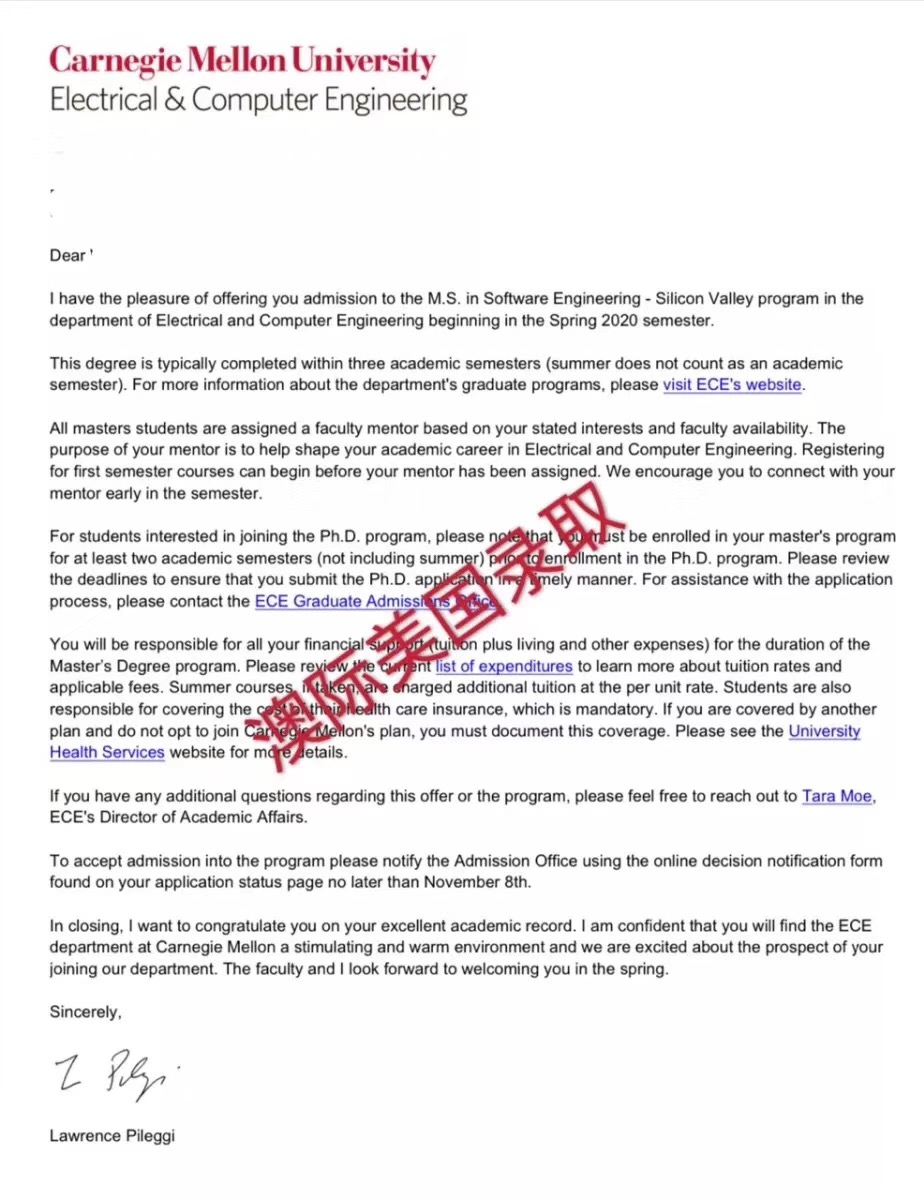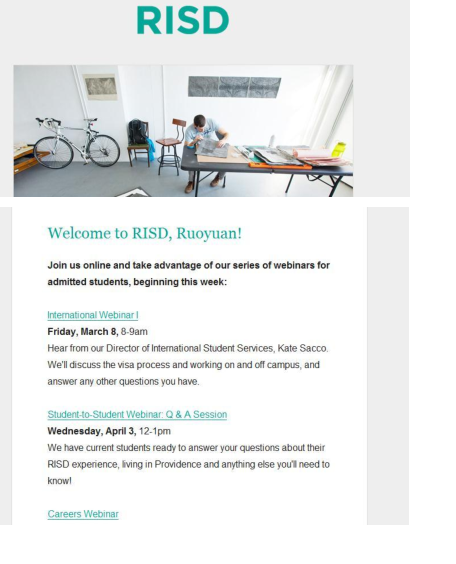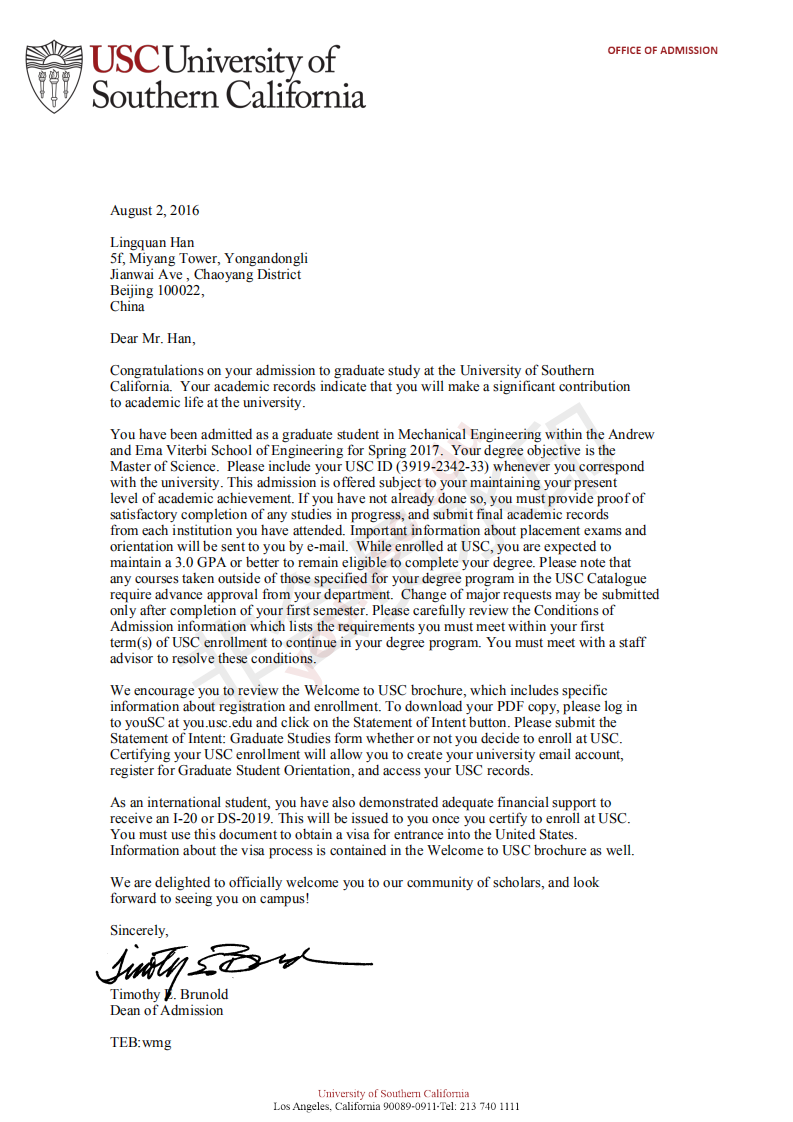SAT写作经典例子之美国女权运动先驱Susan B. Anthony.
2017-08-05 63阅读
下面为大家介绍的这篇SAT写作例子是关于一位非常著名的美国女权运动主义者苏珊·安东尼的相关信息。这是一个非常有名的人物,她的头像出现在了1979年版的美国一元硬币正面。我们一起来看看详细的内容介绍吧。
直接获取澳际名师服务点击进入 >>>>有问题?找免费的澳际专家咨询! 或者通过在线咨询处留言,把您最关心的问题告诉我们。
Born:Susan Brownell Anthony
February 15, 1820
Adams, Massachusetts
Died:March 13, 1906 (aged 86)
Rochester, New York
Occupation:Suffragist, women&aposs rights advocate
Signature:
Susan Brownell Anthony (February 15, 1820 – March 13, 1906) was a prominent American civil rights leader who played a pivotal role in the 19th century women&aposs rights movement to introduce women&aposs suffrage into the United States. She was co-founder of the first Women&aposs Temperance Movement with Elizabeth Cady Stanton as President. She also co-founded the women&aposs rights journal, The Revolution. She traveled the United States and Europe, and averaged 75 to 100 speeches per year. She was one of the important advocates in leading the way for women&aposs rights to be acknowledged and instituted in the American government.
Early life
Susan B. Anthony was born to Daniel Anthony (1794–1862) and Lucy Read (1793–1880) and raised in West Grove, Adams, Massachusetts. She was the second oldest of seven children—Guelma Penn (1818–1873), Hannah Lapham (1821–1877), Daniel Read (1824–1904), Mary Stafford (1827–1907), Eliza Tft (1832–1834), and Jacob Merritt (1834–1900). One brother, publisher Daniel Read Anthony, would become active in the anti-slavery movement in Kansas, while a sister, Mary Stafford Anthony, became a teacher and a woman&aposs rights activist. Anthony remained close to her sisters throughout her life.
Anthony&aposs father Daniel was a cotton manufacturer and abolitionist, a stern but open-minded man who was born into the Quakerreligion. He did not allow toys or amusements into the household, claiming that they would distract the soul from the "inner light." Her mother, Lucy, was a student in Daniel&aposs school; the two fell in love and agreed to marry in 1817, but Lucy was less sure about marrying into the Society of Friends (Quakers). Lucy attended the Rochester women’s rights convention held in August 1848, two weeks after the historic Seneca Falls Convention, and signed the Rochester convention’s Declaration of Sentiments. Lucy and Daniel Anthony enforced self-discipline, principled convictions, and beli in one&aposs own self-worth.
Susan was a precocious child, having learned to read and write at age three. In 1826, when she was six years old, the Anthony family moved from Massachusetts to Battenville, New York. Susan was sent to attend a local district school, where a teacher rused to teach her long division because of her gender. Upon learning of the weak education she was receiving, her father promptly had her placed in a group home school, where he taught Susan himself. Mary Perkins, another teacher there, conveyed a progressive image of womanhood to Anthony, further fostering her growing beli in women&aposs equality.
In 1837, Anthony was sent to Deborah Moulson&aposs Female Seminary, a Quaker boarding school in Philadelphia. She was not happy at Moulson&aposs, but she did not have to stay there long. She was forced to end her formal studies because her family, like many others, was financially ruined during the Panic of 1837. Their losses were so great that they attempted to sell everything in an auction, even their most personal belongings, which were saved at the last minute when Susan&aposs uncle, Joshua Read, stepped up and bid for them in order to restore them to the family.
In 1839, the family moved to Hardscrabble, New York, in the wake of the panic and economic depression that followed. That same year, Anthony lt home to teach and pay off her father&aposs debts. She taught first at Eunice Kenyon&aposs Friends&apos Seminary, and then at the Canajoharie Academy in 1846, where she rose to become headmistress of the Female Department. Anthony&aposs first occupation inspired her to fight for wages equivalent to those of male teachers, since men earned roughly four times more than women for the same duties.
In 1849, at age 29, Anthony quit teaching and moved to the family farm in Rochester, New York. She began to take part in conventions and gatherings related to the temperance movement. In Rochester, she attended the local Unitarian Church and began to distance herself from the Quakers, in part because she had frequently witnessed instances of hypocritical behavior such as the use of alcohol amongst Quaker preachers. As she got older, Anthony continued to move further away from organized religion in general, and she was later chastised by various Christian religious groups for displaying irreligious tendencies. By the 1880s, Anthony had become agnostic.
In her youth, Anthony was very self-conscious of her appearance and speaking abilities. She long resisted public speaking for fear she would not be sufficientlyeloquent. Despite these insecurities, she became a renowned public presence, eventually helping to lead the women&aposs movement.
Early social activism
In late 1850, Anthony read a detailed account in the New York Tribune of the first National Women&aposs Rights Convention inWorcester, Massachusetts. In the article, Horace Greeley wrote an especially admiring description of the final speech, one given by Lucy Stone. Stone&aposs words catalyzed Anthony to devote her life to women&aposs rights. In the summer of 1852, Anthony met both Greeley and Stone in Seneca Falls.
In 1851, on a street in Seneca Falls, Anthony was introduced to Elizabeth Cady Stanton by a mutual acquaintance, as well as fellow feminist Amelia Bloomer. Anthony joined with Stanton in organizing the first women&aposs state temperance society in America after being rused admission to a previous convention on account of her sex, in 1851. Stanton remained a close friend and colleague of Anthony&aposs for the remainder of their lives, but Stanton longed for a broader, more radical women&aposs rights platform. Together, the two women traversed the United States giving speeches and attempting to persuade the government that society should treat men and women equally.
Anthony was invited to speak at the third annual National Women&aposs Rights Convention held in Syracuse, New York in September 1852. She and Matilda Joslyn Gage both made their first public speeches for women&aposs rights at the convention. Anthony began to gain notice as a powerful public advocate of women&aposs rights and as a new and stirring voice for change. Anthony participated in every subsequent annual National Women&aposs Rights Convention, and served as convention president in 1858.
In 1856, Anthony further attempted to unify the African-American and women&aposs rights movements when, recruited by abolitionist Abby Kelley Foster, she became an agent for William Lloyd Garrison&aposs American Anti-Slavery Society of New York. Speaking at the Ninth National Women’s Rights Convention on May 12, 1859, Anthony asked "Where, under our Declaration of Independence, does the Saxon man get his power to deprive all women and Negroes of their inalienable rights?"
The Revolution
Susan B. Anthony c. 1855On January 8, 1868, Anthony first published the women&aposs rights weekly journal The Revolution. Printed in New York City, its motto was: "The true republic—men, their rights and nothing more; women, their rights and nothing less." Anthony worked as the publisher and business manager, while Elizabeth Cady Stanton acted as editor. The main thrust of The Revolution was to promote women’s and African-Americans’ right to suffrage, but it also discussed issues of equal pay for equal work, more liberal divorce laws and the church’s position on women’s issues. The journal was backed by independently wealthy George Francis Train, who provided $600 in starting funds. His financial support ceased by May 1869, and the paper began to operate in debt. Anthony insisted on expensive, high-quality printing equipment, and she paid women workers the high wages she thought they deserved. She banned any advertisements for alcohol- and morphine-laden patent medicines; all such medicines were abhorrent to her. However, revenue from non-patent-medicine advertisements was too low to cover costs. In addition, Anthony got President Johnson to subscribe to the weekly journal bore the first publication.
In June 1870, Laura Curtis Bullard, a Brooklyn-based writer whose parents became wealthy from selling a popular morphine-containing patent medicine called "Mrs. Winslow&aposs Soothing Syrup", bought the rights to The Revolution for one dollar, with Anthony assuming its $10,000 debt, an amount equal to $184,000 in current value. Anthony used her lecture fees to repay the debt, completing the task in six years. Under Bullard, the journal adopted a literary orientation and accepted patent medicine ads, but it folded in February 1872.
American Equal Rights Association
Founded on May 10, 1866, during the Eleventh National Woman’s Rights Convention, the AERA met its first test in 1867. In that year Kansas, a Republican state, voted down two separate rerenda granting suffrage to blacks and women, respectively. During the Kansas campaign, organization founders Elizabeth Cady Stanton and Susan B. Anthony had accepted the help of a known racist, alienating abolitionist members as well as AERA president Lucretia Mott.
In 1869, long-time friends Frederick Douglass and Susan B. Anthony found themselves, for the first time, on opposing sides of a debate. The American Equal Rights Association (AERA), which had originally fought for both blacks’ and women’s right to suffrage, voted to support the 15th Amendment to theConstitution, granting suffrage to black men, but not women. Anthony questioned why women should support this amendment when black men were not continuing to show support for women’s voting rights. Partially as a result of the decision by the AERA, Anthony soon thereafter devoted herself almost exclusively to the agitation for women&aposs rights.
On November 18, 1872, Anthony was arrested by a U.S. Deputy Marshal for voting on November 5 in the 1872 Presidential Election two weeks earlier. She had written to Stanton on the night of the election that she had "positively voted theRepublican ticket—straight...". She was tried and convicted seven months later, despite the stirring and eloquent presentation of her arguments that the recently adopted Fourteenth Amendment, which guaranteed to "All persons born or naturalized in the United States, and subject to the jurisdiction thereof, are citizens of the United States and of the State wherein they reside. No State shall make or enforce any law which shall abridge the privileges or immunities of citizens of the United States; nor shall any State deprive any person of life, liberty, or property, without due process of law; nor deny to any person within its jurisdiction the equal protection of the laws." The privileges of citizenship, which contained no gender qualification, gave women the constitutional right to vote in federal elections. Her trial took place at the Ontario County courthouse in Canandaigua, New York, bore Supreme Court Associate Justice Ward Hunt. Justice Hunt rused to allow Anthony to testify on her own behalf, allowed statements given by her at the time of her arrest to be allowed as "testimony," explicitly ordered the jury to return a guilty verdict, rused to poll the jury afterwards, and read an opinion he had written bore the trial even started. The sentence was a $100 fine, but not imprisonment; true to her word in court ("I shall never pay a dollar of your unjust penalty"), she never paid the fine for the rest of her life, and an embarrassed U.S. Government took no collection action against her. After her trial Anthony petitioned the US Congress to remove the fine in January 1874.
The trial gave Anthony the opportunity to spread her arguments to a wider audience than ever bore, because after her arrest and prior to her trial Anthony undertook an exhaustive speaking tour of all 29 of the towns and villages of Monroe county where her trial was to be held. In her speeches she addressed the question "Is it a Crime for a Citizen of the United States to Vote?" and quoted the Declaration of Independence, the United States Constitution, the New York Constitution, James Madison, Thomas Paine, the Supreme Court, and several of the leading Radical Republican senators of the day to support her case that women as citizens have a right to vote. The district attorney obtained a change of venue because he determined that a fair trial could not take place in Monroe County. The trial was moved to Ontario County, and Anthony spoke to more than 20 Ontario audiences bore the trial. Anthony argued that women, traditionally in servitude to man, should be included in the emancipation amendment granting voting privileges to former slaves. She asked her fellow citizens "how can the &aposconsent of the governed&apos be given if the right to vote be denied?"
Anthony toured Europe in 1883 and visited many charitable organizations. She wrote of a poor mother she saw in Killarney that had "six ragged, dirty children" to say that "the evidences were that &aposGod&apos was about to add a No. 7 to her flock. What a dreadful creature their God must be to keep sending hungry mouths while he withholds the bread to fill them!"
In 1893, she joined with Helen Barrett Montgomery in forming a chapter of the Woman’s Educational and Industrial Union (WEIU) in Rochester.
National suffrage organizations
In 1869, Anthony and Elizabeth Cady Stanton founded the National Woman Suffrage Association (NWSA), an organization dedicated to gaining women&aposs suffrage. Anthony insisted that Stanton become president as long as possible; Anthony served as vice-president-at-large until 1892 when she became president.
In February 1890, Anthony orchestrated the merger of the NWSA with Lucy Stone&aposs more moderate American Woman Suffrage Association (AWSA), creating the National American Woman Suffrage Association (NAWSA). This merger was partially done because Anthony admired Anna Howard Shaw, who worked with the AWSA and was a great speaker. Prior to the controversial merge, Anthony had created a special NWSA executive committee to vote on whether they should merge with the AWSA, despite the fact that using a committee instead of an all-member vote went against the NWSA constitution. Motions to make it possible for members to vote by mail were strenuously opposed by Anthony and her adherents, and the committee was stacked with members who favored the merger. (Two members who voted against the merger were asked to resign).
Anthony&aposs pursuit of alliances with moderate suffragists created long-lasting tension between herself and more radical suffragists like Stanton. Stanton openly criticized Anthony&aposs stance, writing that Anthony and AWSA leader Lucy Stone "see suffrage only. They do not see woman&aposs religious and social bondage." Anthony responded to Stanton: "We number over ten thousand women and each one has opinions ... and we can only hold them together to work for the ballot by letting alone their whims and prejudices on other subjects!"
The creation of the NAWSA fectively marginalized the more radical elements within the women&aposs movement, including Stanton. Anthony pushed for Stanton to be voted in as the first NAWSA president, and stood by her as Stanton was belittled by the large factions of less-radical members within the new organization.
In collaboration with Stanton, Matilda Joslyn Gage, and Ida Husted Harper, Anthony published The History of Woman Suffrage (4 vols., New York, 1884–1887). Anthony also briended Josephine Brawley Hughes, an advocate of women&aposs rights and Prohibition in Arizona, and Carrie Chapman Catt, whom Anthony endorsed for the presidency of the NAWSA when Anthony formally retired in 1900.
Later personal life
Cover of the February 20, 1913, issue of Life, subtitled "Ancient History", showing an Anthony-like figure in classical dress leading a protest for women&aposs rightsBore retiring, Anthony was asked if all women in the United States would ever be given the right to vote. She replied by stating, "it will come, but I shall not see it...It is inevitable. We can no more deny forever the right of self-government to one-half our people than we could keep the Negro forever in bondage. It will not be wrought by the same disrupting forces that freed the slave, but come it will, and I believe within a generation." "Failure is impossible" were the words she lt with her "girls" to encourage them on in the long discouraging struggle ahead. Fourteen years after Anthony&aposs death, following assiduous campaigning, women were given the right to vote on August 26, 1920, by the Nineteenth Amendment to the U.S. Constitution.
Death
After retiring in 1900, Anthony remained in Rochester, where she died of heart disease and pneumonia in her house at 17 Madison Street on March 13, 1906. She was buried at Mount Hope Cemetery. Following her death, the New York State Senate passed a resolution remembering her "unceasing labor, undaunted courage and unselfish devotion to many philanthropic purposes and to the cause of equal political rights for women."
苏珊·安东尼介绍(Susan Brownnell Anthony)(1820年2月15日-1906年3月13日),19世纪美国女权废奴主义者和女权运动先驱,社会活动家,对争取美国妇女参政权贡献卓著。在1872年的美国总统大选中,安东尼带领一群妇女前往投票所参加投票。由于当时妇女投票是违法的,她被逮捕并遭到起诉,最终判决有罪并处以一百美元的罚金。但她拒付罚金,事后也没有人向她索款。她的头像出现在1979年版的美元1元硬币的正面。
以上就是关于苏珊·安东尼的SAT写作经典例子的全部内容,非常详细,后面附有简短的背景介绍。大家可以在备考关于成功,社会以及其他相关的话题的时候适当的应用一下这个例子。
澳际倾情回馈客户,零利润SAT香港考团,详细信息
更多SAT写作相关:
北京SAT写作培训
如何根据SAT写作题目应用例子?
SAT写作经典例子之化学家巴斯德
SAT写作热门例子之Elon Musk
留学咨询
更多出国留学最新动态,敬请关注澳际教育手机端网站,并可拨打咨询热线:400-601-0022
留学热搜
相关推荐
- 专家推荐
- 成功案例
- 博文推荐

Copyright 2000 - 2020 北京澳际教育咨询有限公司
www.aoji.cn All Rights Reserved | 京ICP证050284号
总部地址:北京市东城区 灯市口大街33号 国中商业大厦2-3层









高国强 向我咨询
行业年龄 11年
成功案例 2937人
留学关乎到一个家庭的期望以及一个学生的未来,作为一名留学规划导师,我一直坚信最基本且最重要的品质是认真负责的态度。基于对学生和家长认真负责的原则,结合丰富的申请经验,更有效地帮助学生清晰未来发展方向,顺利进入理想院校。
陈瑶A 向我咨询
行业年龄 15年
成功案例 4612人
拥有大量高端成功案例。为美国哈佛大学、宾夕法尼亚大学等世界一流名校输送大批优秀人才。
齐亚楠 向我咨询
行业年龄 13年
成功案例 3536人
商科案例有哥伦比亚大学等,工科案例有麻省理工大学等,艺术案例有罗德岛大学等。
李君君 向我咨询
行业年龄 13年
成功案例 3623人
成功案例涉及美国排名前60的院校,专业涵盖商科(金融,会计,管理),工科(生物工程,化学工程,计算机科学,电气工程)等热门领域。